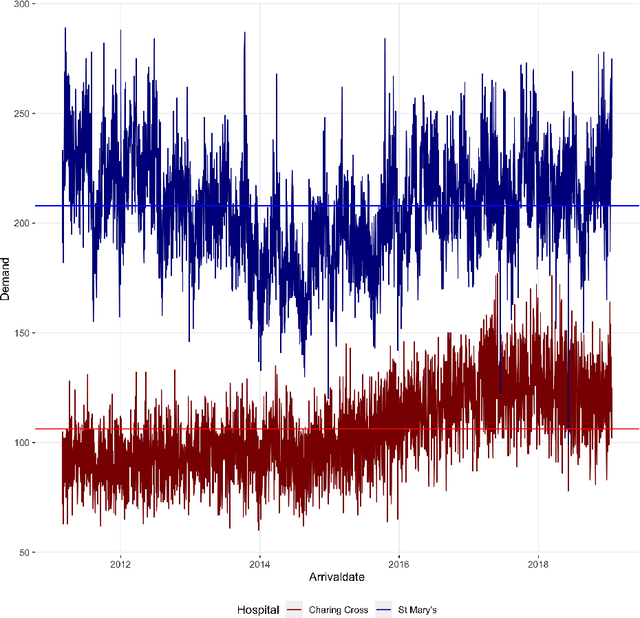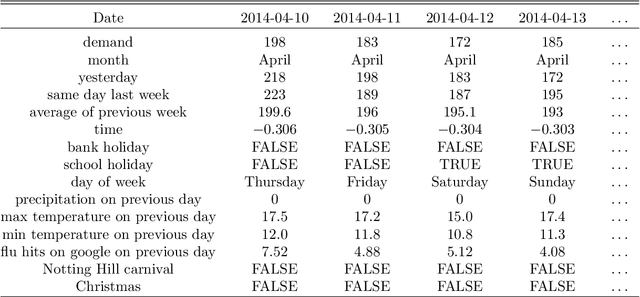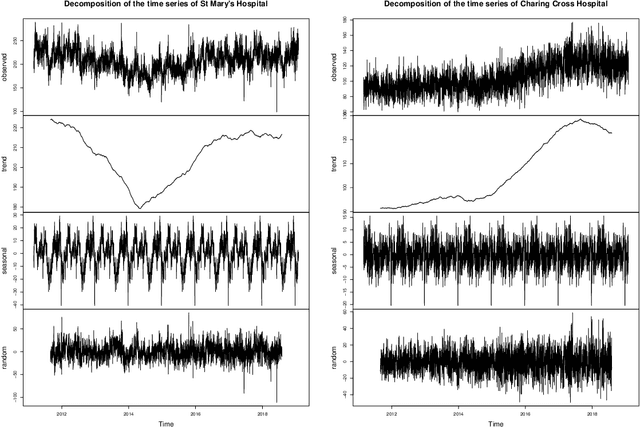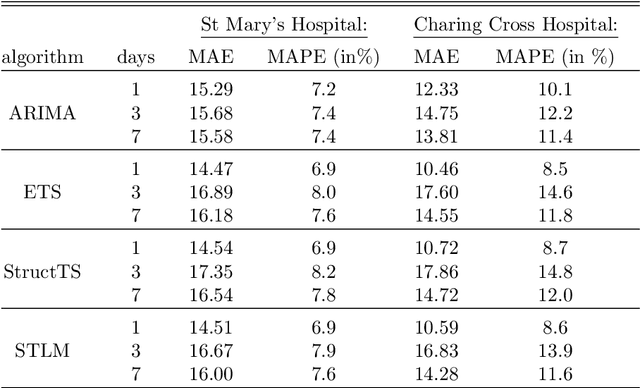A unified machine learning approach to time series forecasting applied to demand at emergency departments
Paper and Code
Jul 13, 2020



There were 25.6 million attendances at Emergency Departments (EDs) in England in 2019 corresponding to an increase of 12 million attendances over the past ten years. The steadily rising demand at EDs creates a constant challenge to provide adequate quality of care while maintaining standards and productivity. Managing hospital demand effectively requires an adequate knowledge of the future rate of admission. Using 8 years of electronic admissions data from two major acute care hospitals in London, we develop a novel ensemble methodology that combines the outcomes of the best performing time series and machine learning approaches in order to make highly accurate forecasts of demand, 1, 3 and 7 days in the future. Both hospitals face an average daily demand of 208 and 106 attendances respectively and experience considerable volatility around this mean. However, our approach is able to predict attendances at these emergency departments one day in advance up to a mean absolute error of +/- 14 and +/- 10 patients corresponding to a mean absolute percentage error of 6.8% and 8.6% respectively. Our analysis compares machine learning algorithms to more traditional linear models. We find that linear models often outperform machine learning methods and that the quality of our predictions for any of the forecasting horizons of 1, 3 or 7 days are comparable as measured in MAE. In addition to comparing and combining state-of-the-art forecasting methods to predict hospital demand, we consider two different hyperparameter tuning methods, enabling a faster deployment of our models without compromising performance. We believe our framework can readily be used to forecast a wide range of policy relevant indicators.
 Add to Chrome
Add to Chrome Add to Firefox
Add to Firefox Add to Edge
Add to Edge